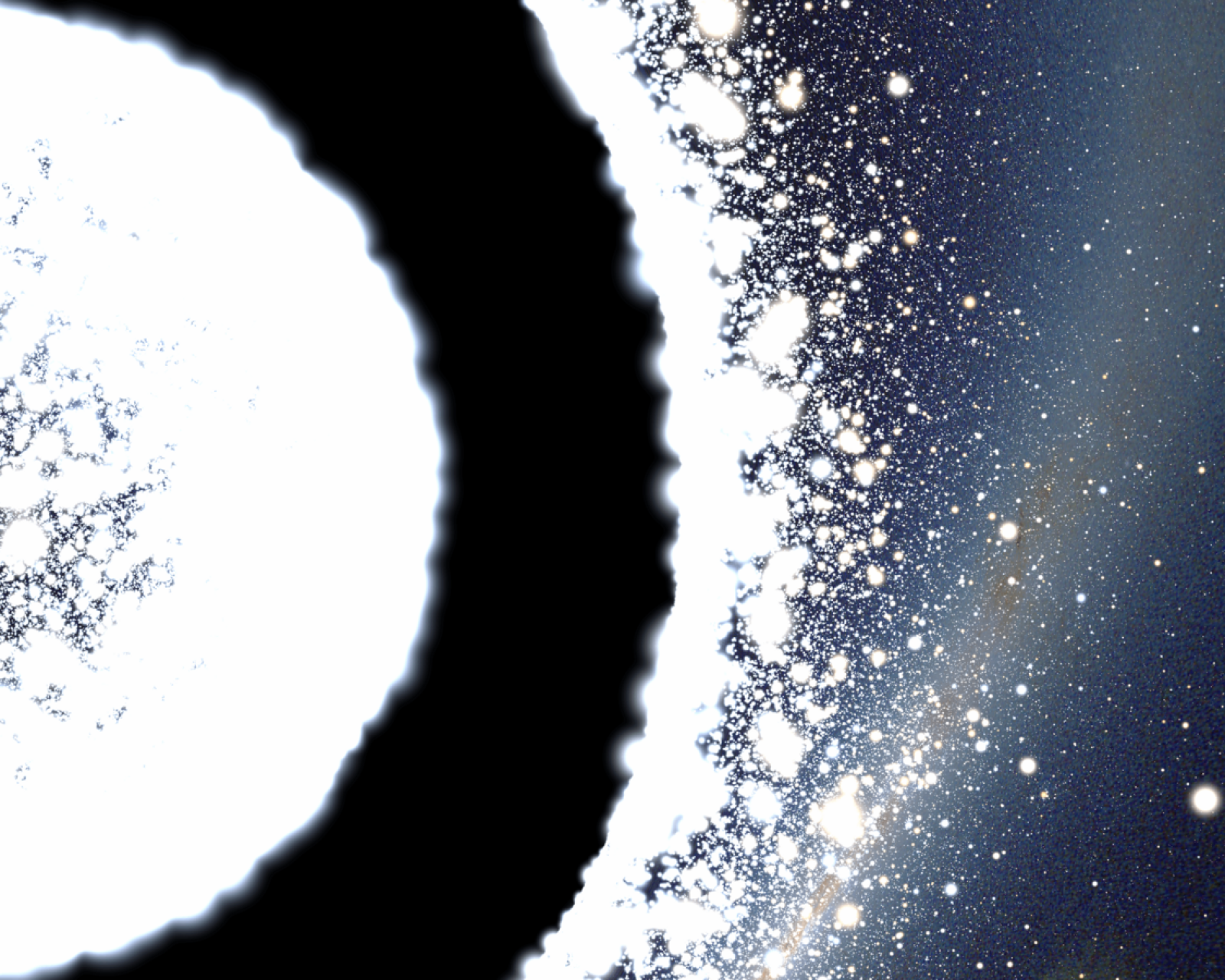Follow us on Google News (click on ☆)
This detection, named GW190521, challenges established models for black hole mergers. Its meticulous analysis is leading some researchers to explore avenues based on still-hypothetical physical concepts.

An example of a wormhole in a Schwarzschild metric as it would be seen by an observer who has crossed a black hole's horizon.
The region from which the observer comes is located on the right of the image. Apart from the region near the black hole's shadow, redshift effects make the sky background very dark. In contrast, it is very bright in the second visible region once the horizon is passed.
Image Wikimedia
The enigma of the GW190521 signal
On May 21, 2019, the LIGO and Virgo interferometers recorded a vibration of spacetime lasting barely a tenth of a second. Its structure did not show the characteristic spiral phase of orbiting black holes. Standard models attribute this event to a direct and chance encounter.
The typical gravitational wave generated by a binary system spreads over several seconds. It includes a gradual increase in amplitude and frequency. The GW190521 signal, however, appears as a single, isolated pulse. This absence of a precursor makes its origin difficult to determine with certainty.
If it is indeed a black hole collision, the event would have produced a final black hole of about 142 times the mass of our Sun. An object of this size should normally generate a longer and more structured signal. The brevity of GW190521 is its main mystery. It motivates the search for alternative explanations to the standard scenario.
The bold hypothesis of a cosmic bridge
A team from the University of the Chinese Academy of Sciences proposes a scenario related to wormholes. These theoretical entities, also called Einstein-Rosen bridges, would connect two distinct points in spacetime. They could even link two different universes.
The researchers suggest that the merger of two black holes in a parallel universe would create an ephemeral wormhole. The gravitational echo of this collision would travel through this bridge to reach our detectors. The rapid closure of the wormhole would explain the brevity of the observed signal. Our universe would thus capture only a tiny part of the event.
The study, posted on the arXiv preprint server, compares the data with a specific mathematical model: the wormhole scenario fits the observations quite well. The future detection of similar events could help settle the matter.
To go further: What is a wormhole?
A wormhole is a theoretical solution to Einstein's equations of general relativity. It is often visualized as a tunnel through the fabric of spacetime. This hypothetical structure would create a shortcut between two distant regions of the Universe. It could also link two distinct universes.
The formation of a stable wormhole would require a form of exotic matter. This matter would need to possess negative energy or negative mass to keep the tunnel open. No direct observation has yet confirmed the existence of this matter or of wormholes themselves. Their study therefore belongs mainly to theoretical physics.
Wormholes are distinct from black holes, which are astrophysical objects. A black hole is a region of space from which nothing can escape. A wormhole, in theory, would possess two "mouths" connected by a "throat". Travel through a wormhole throat remains a speculative concept.